Slow Roasted Tomatoes + Arugula-Tarragon Pesto over Socca
Chickpea flour has to be one of my favourite gluten-free flours out there. It has a lot of character (don’t even try tasting it raw, by the way) but it is, at the same time, very versatile. I make crêpes with it, savoury pancakes, use it in small amounts in cake batters (its high protein content mimics that of eggs, making it the perfect egg replacer) and many other preparations.
It wasn’t long ago that I’ve heard of socca, a chickpea flatbread typical of Nice, France. I came across a recipe for it in Ottolenghi’s Plenty, but haven’t tried it out as it called for egg whites. However, and after some research on the internet, I found out that most socca’s recipes don’t use eggs at all, requiring only three basic ingredients (chickpea flour, water and salt) and, optionally, a few dried herbs and olive oil. In this recipe, I used za’atar to flavour the batter because it goes well with the pesto and all, but you could definitely build different flavour profiles by adding different spices and herbs.
Regarding the slow roasted tomatoes: I quite like raw tomatoes, but I like them even more when slow roasted. They’re sweet and tangy at the same time and can totally transform an otherwise boring leafy salad into something out of this world.
The recipe(s) for the slow roasted tomatoes and the pesto make way more than what you will need for this particular dish but that’s the point, really, so that you have plenty to play around and use in different meals (salads, sandwiches, and so on).
Slow Roasted Tomatoes + Arugula-Tarragon Pesto over Socca
(serves 4 to 6)
slow roasted tomatoes:
1 kg / 15 medium sized vine ripened tomatoes, quartered
2 teaspoons salt
1 tablespoon olive oil
1 tablespoon balsamic vinegar
4 garlic cloves, lightly crushed
arugula-tarragon pesto:
40 g / 1/3 cup laminated almonds, preferably toasted
30 g / ½ cup packed arugula
6 g / ¼ cup packed tarragon
1 teaspoon salt
1 garlic clove, minced
2 tablespoons lemon juice
60 ml / 1/3 cup olive oil
socca:
130 g / 1 cup chickpea flour
1/2 teaspoon salt
1 ½ teaspoons za’atar
250 ml / 1 cup water
1 teaspoon olive oil, to grease the pan
extra arugula and silvered almonds, to assemble
Pre-heat the oven to 140 C / 284 F. Line a large baking tray with greaseproof paper. Add the tomatoes, salt, olive oil, balsamic vinegar and garlic to a bowl and mix to combine. Arrange the tomatoes, cut side up, on the baking tray and slow roast for 1 ½ to 2 hours. They’re done when wilted and lightly brown around the edges.
For the pesto, finely chop, separately, the almonds, arugula and tarragon. Mix everything together in a bowl and add the salt, garlic clove, lemon juice and olive oil. Mix well to combine. Have a taste and adjust the seasonings if needed be. Alternatively, and instead of chopping up the ingredients by hand, you can use a food processor to blend them up.
Raise the oven temperature to 200 C / 390 F.
Sift the chickpea flour, salt and za’atar to a bowl. Slowly pour in the water, whisking vigorously to avoid any lumps. Let the batter sit, covered, for 30 minutes to 1 hour at room temperature.
In the meantime, grease one 25 cm / 10 inch round baking dish with olive oil and put it in the middle third of the oven for at least 10 minutes. After that time take, very carefully, the pan out of the oven and pour the batter into it. Return the pan to the oven for 20-25 minutes, or until the chickpea pancake is golden brown on top. You can finish it (as I did) on the broiler for the last 5 minutes of cooking to encourage even browning.
To assemble, cut the socca into 4 or 6 equal slices. Spread the pesto on each of the slices, add a generous amount of arugula on top as well as 2 to 3 tomato quarters. Drizzle a bit more pesto on top of the tomatoes and finish off with plenty of toasted silvered almonds.
Watermelon Gazpacho
I haven’t been around for quite some time and that doesn’t come without an excuse: great amount of work and the consequent absence from the kitchen have slowed down my inspiration (and desire) to cook these days. Anyway, as I’m now officially on vacation, I’m slowly getting back on track. :) Summer has arrived and cold soups have been in my daily menu quite often. Having heard about Watermelon Gazpacho before, I decided, this time, to give it a try, by combining the ingredients that are usually used when making gazpacho (minus the bread), plus the addition of watermelon. Simple, tasty and refreshing was the outcome. I encourage you to give this one a try, specially if you’re looking for light and summery soups. I like the concept of using seasonal fruits in chilled soups, and I’m tempted to try a version of gazpacho with cherries (which I’ve seen online) as well as a chilled melon soup I’ve spotted while flipping through the pages of The Millenium Cookbook.
Watermelon Gazpacho
(serves 3 to 4)
Ingredients:
3 cups (450 grams) seeded and diced watermelon
3 medium sized tomatoes (about 1 1/4 cups or 300 grams), peeled, seeded and diced
1 small cucumber (about 3/4 cup or 135 grams), peeled, seeded and diced
1 small white onion (about 1/3 cup or 50 grams), minced
2 tablespons minced fresh ginger
1 tablespoon red wine or balsamic vinegar
2 tablespoons olive oil
salt and pepper to taste
Garnish:
1 cup (140 grams) cooked corn kernels (cut from a medium sized corn cob)
1 medium sized onion, minced
a handful of chopped mint or basil leaves (I used the first)
1. In a large food processor or blender, blend the watermelon until smooth. Alternatively, if your food processor or blender isn’t large enough, you can work in batches.
2. Then, add the diced tomatoes, cucumber, white onion and ginger and purée until well blended. Finally, add the balsamic vinegar, olive oil and salt and pepper to the mixture, and pulse once again for a couple of seconds to combine. Add a taste and adjust the seasonings, adding a bit more salt and pepper if necessary.
3. Pour the soup into a large bowl. Cover, and refrigerate for a couple of hours before serving.
4. In the meantime, mix all the ingredients for the garnish.
5. To serve, pour the soup into chilled bowls or glasses and scatter 2 to 3 tablespoons of the corn and onion mixture on top.
Ratatouille Soup
When it comes to food, I’m not a purist. That being said, I have no problems eating canned beans or store bought cookies, as long as they’re vegan and taste good (although, quite frankly, I often cook my beans and bake my cookies). I generally don’t have “prejudices” against canned stuff, and if there are canned produces I use on a regular basis, they are tomato sauce and roasted peppers. They’re vegan, taste good, and although it’s often said there’s nothing as homemade tomato sauce, I’m totally sold to the canned one.
When it comes to recipes, specially traditional and local ones, I’m also not a purist. I do believe moussaka is not the same without meat in it, but I do really enjoy my dairy-free version of the greek classic; the same goes for pizzas and lasagnas, foods that usually call for cheese, and that I most of the times make cheese-less. Actually, both vegans and vegetarians end up, most of the time, tweaking recipes to get them to fit their diets, and that often means to make a traditional dish the unconventional way. This whole process of tweaking recipes fascinates me, as that doesn’t mean they’ll loose their former character just because they’re made a little different by some vegans and vegetarians out there. For me, respecting the identity of a certain local recipe (I’m thinking of portuguese traditional foods by the way), doesn’t mean you have to make it exactly as people did a hundred years ago. Time has passed, dietary needs have changed thanks to our growing knowledge on nutrition and health issues; and I feel it’s by tweaking and experimenting with flavors, textures and so on, that you keep the spirit of traditional foods alive nowadays, more than sticking to the way they’re – traditionally speaking - supposed to be made.
I found myself thinking about all this because of today’s recipe. Ironically, a recipe inspired by a french dish that is already vegan. There is much debate on how to make traditional ratatouille, but I don’t really want to contribute to the discussion. My version of it calls for canned tomato sauce and canned roasted bell peppers, as it saves up some time, being therefore more user-friendly, but if you want to make everything from scratch, just go ahead. Also, by adding far more liquid than it’s usually added on a stew, I make more of a soup, rather than a side dish. This ratatouille soup, alongside with a good slice of toasted wholegrain bread, makes for an excellent comforting meal, perfect for the autumn days to come.
Ratatouille Soup
(serves 6)
300 grams aubergine
300 grams zucchini
3 medium size tomatos, coarsly chopped
2 roasted bell peppers, coarsly chopped
3 garlic cloves, minced
2 tablespoons olive oil
½ red chili pepper, finely cut
½ teaspoon dried thyme
½ teaspoon dried oregano
1 cup plain tomato sauce
½ cup red wine
1 1/2 cups light stock
1 bay leave
salt and pepper to taste
1. Start by preparing the aubergine and zucchini: slice both vegetables into 0,8 cm thick rounds, and then cut each round into 4 equal pieces. Set aside.
2. In a large pan over medium heat, add the olive oil, garlic, chili, dried thyme, oregano and bay leaf, and sautée for 2 minutes. Add the tomatos and roasted bell peppers and cook for 5 minutes, stirring occasionally.
3. Now, add the stock, red wine, and tomato sauce to the pan, and cook for 10 to 15 minutes, or until the tomatos start breaking down and you get the consistency of a thick, hearty sauce.
4. Discard the bay leaf. Transfer the pan to your counter or kitchen table, and with the help of an immersion blender, blend the mixture until smooth.
5. Return the pan back to the stove, add the zucchini and aubergine, and cook, over low-medium heat, for at least 25 minutes, maybe a bit a longer – the point here is to slightly overcook the vegetables. Add salt and pepper to taste.
6. Serve the soup hot or at room temperature – it’s particularly good alongside a slice of wholegrain bread - bearing in mind it will thicken in the hours to follow the end of the preparation.
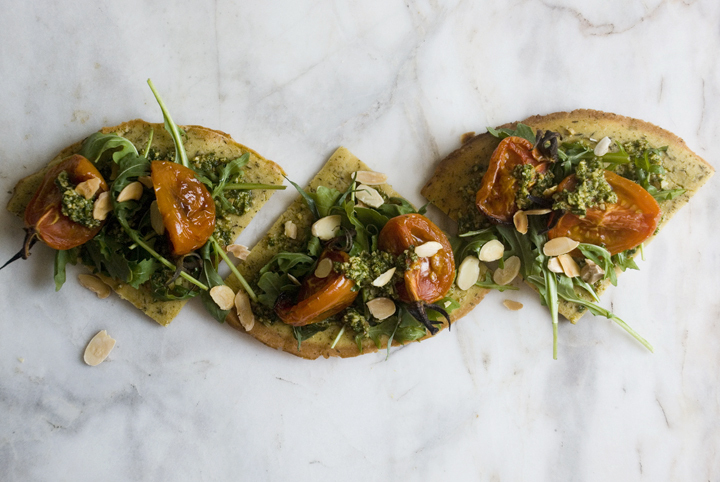
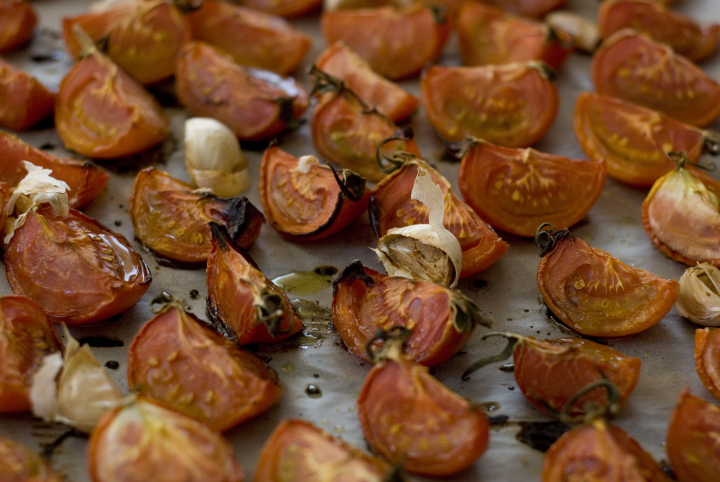
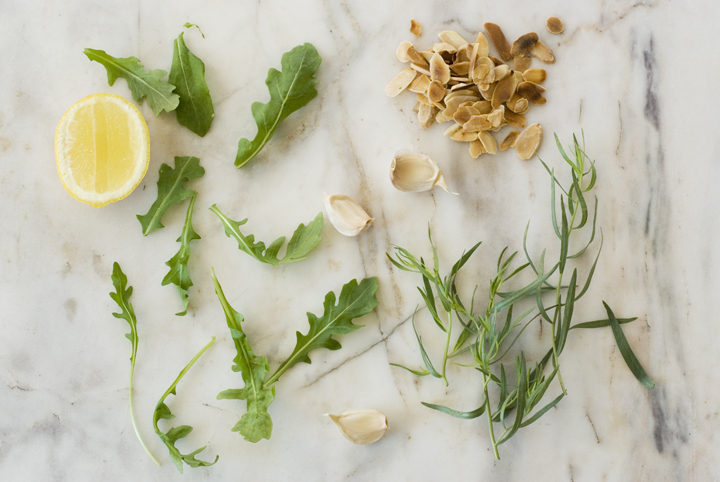
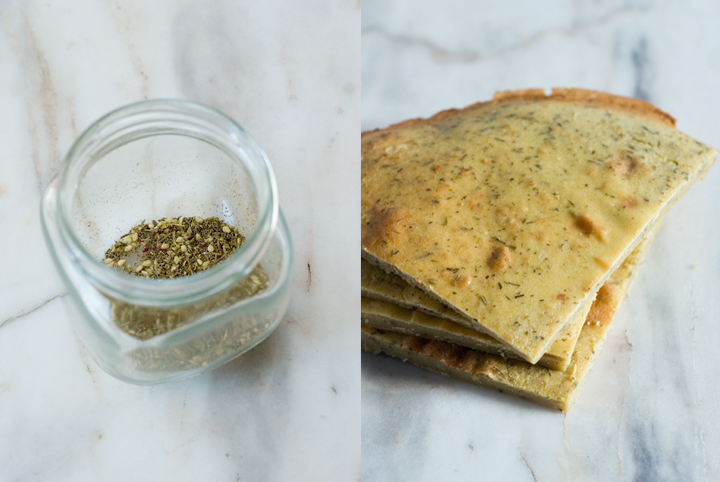
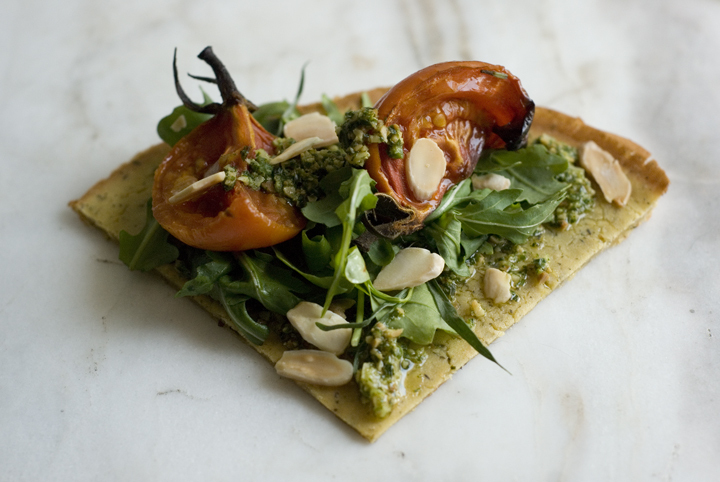

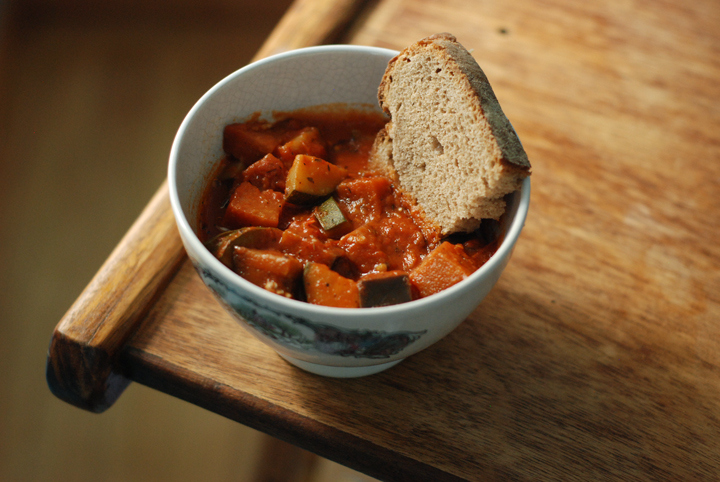
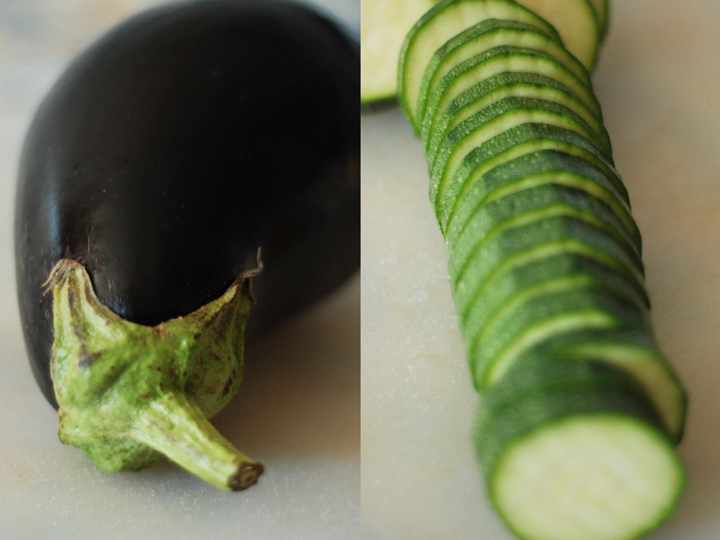
2 comments